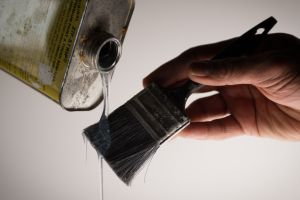An investigation by researchers at Michigan State University has found that 13 deaths since 2000 involved the use of paint-stripping products containing methylene chloride. The U.S. Centers for Disease Control and Prevention (CDC) includes the findings in the 24 February 2012 Morbidity and Mortality Weekly Report.
Methylene chloride is a volatile, colorless and toxic chemical widely used as a degreaser and paint stripper. The chemical is available in many over-the-counter products sold at home improvement stores, and is used as well in industrial workplaces. Since methylene chloride vapors are heavier than air, they can remain in bathtubs after application, causing increased danger to workers applying a paint-stripping product with that chemical.
The CDC’s alert was written by Michigan State medical professor Kenneth Rosenman, chief of the Division of Occupational and Environmental Medicine, and industrial hygenist Debra Chester. The report was written as part of the Michigan Fatality Assessment and Control Evaluation program that investigates work-related deaths and identifies ways to prevent them.
Under the program, Chester identified the 2010 death of a 52 year-old co-owner of a Michigan-based bathtub refinishing company who was found unresponsive and later died after using a product marketed for the aircraft industry containing methylene chloride. Further inquiries by Chester showed a similar Michigan death using the same product earlier in 2010 and another death from several years before.
Chester notified the National Institute for Occupational Safety and Health, and soon uncovered a total of 13 deaths in nine states identified since April 2000. The death of a woman in Iowa two weeks ago while refinishing a bathtub currently is also being investigated as possible exposure to methylene chloride.
The report notes that the number of methylene chloride poisoning cases may be under-reported. National databases do not include self-employed workers or consumers. Thus more deaths among bathtub refinishers may have been considered heart disease, when they were actually caused by methylene chloride.
“To use products containing methylene chloride safely, work areas must be well-ventilated, and when levels of methylene chloride exceed recommended exposure limits, workers must use protective equipment,” says Rosenman. Chester and Rosenman notified bathtub refinishers throughout Michigan of their findings and alerted manufacturers of the product. Efforts also are being made to warn the general public.
They recommended that manufacturers note on products containing methylene chloride that they should not be used in applications such as bathtub refinishing. The report also recommends manufacturers consider restricting access to such products.
Read more: Online Resource Helps Responders Identify Chemical Hazards
* * *


 RSS - Posts
RSS - Posts
Bathtub refinishing is definitely the answer to any type of tub restoration project. Saving over 80% over the cost of replacement is the main reason bathtub refinishing will always be the number one alternative to making any bathtub look new again.
Thanks for your comment and readership of Science Business. There’s no dispute over the value, both aesthetic and financial, of bathtub restoration. The study in this post looks at how the job can be done more safely, both by professionals and do-it-yourselfers. -AK